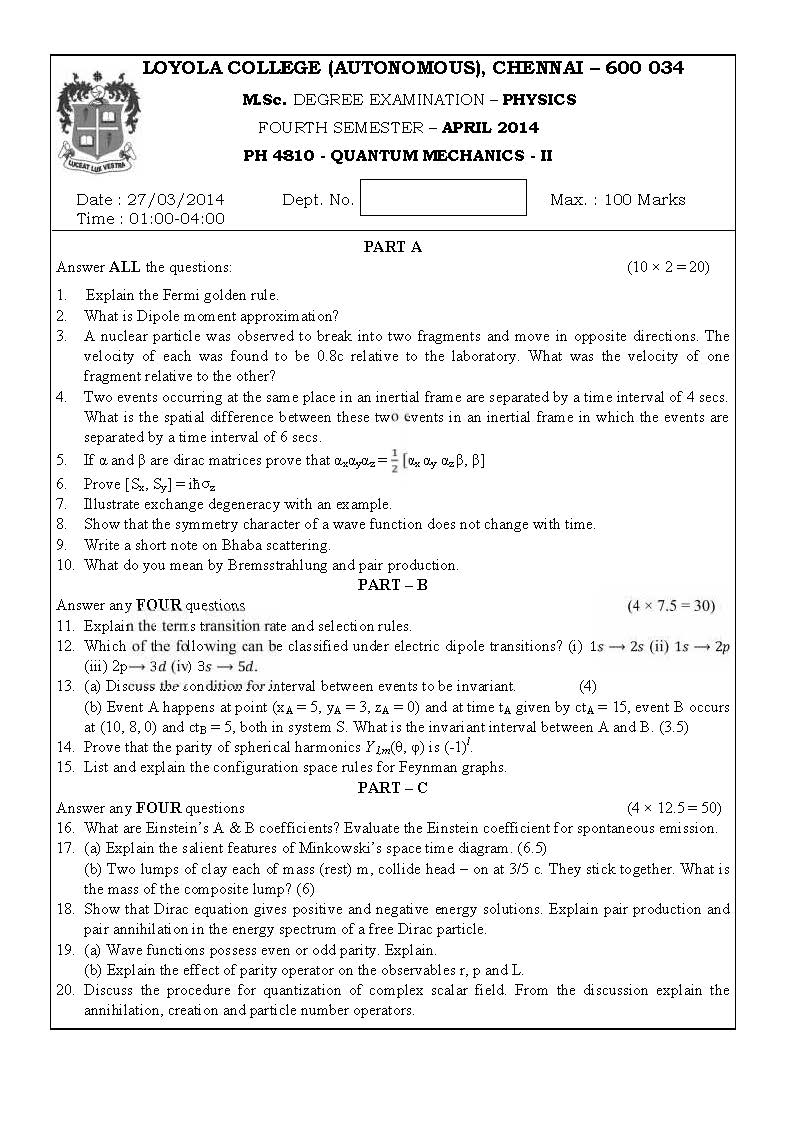LOYOLA COLLEGE (AUTONOMOUS), CHENNAI – 600 034
M. Sc., DEGREE EXAMINATION – PHYSICS
THIRD SEMESTER – NOVEMBER 2003
PH 3800 / PH 920 – QUANTUM MECHANICS II
03.11.2003 Max. : 100 Marks
1.00 – 4.00
SECTION – A
Answer ALL the questions. (10 x 2 = 20)
- If the eigen values of A are ‘a’, then show that where is the projection operator.
- Prove that e-i a Px / is unitary when a is a real parameter.
- Evaluate <jm | J – J + | jm>
- Show that e
- What is first Born approximation?
- State optical theorem.
- Explain dipole approximation.
- What are allowed and Forbidden transitions with respect to the selection rules of the dipole approximation.
- Mention the disadvantage of Klein – Gordan equation for relativistic particles.
- What is the significance of the negative energy state?
SECTION – B
Answer any FOUR questions. (4 x 7.5 = 30)
- Show that has the form – i in the Schroedinger representation.
- Obtain the G. Coefficients for the coupling of two spin angular momenta (j1 = j2 = ½).
- Arrive at an expression for the scattering amplitude using Green’s functions.
- Explain the Schroedinger picture of time evolution.
- Obtain the explicit form for matrices in the Dirac Hamiltonian.
SECTION – C
Answer any FOUR questions. (4 x 12.5 = 50)
- Arrive at an expression for a proper choice of basis set for commuting operators.
- Obtain the matrix representation for J2, Jx, Jy, Jz in the |jm> basis for j = 1 and j = 3/2.
- Explain the partial wave analysis and derive an expression for the scattering amplitude in terms of phase shifts.
- Derive an expression for transition probability of upward and downward transition for an atom interacting with an electromagnetic radiation.
- Determine the eigenvalues and eigenfunctions of a free particle using Dirac’s Haneiltonian.
